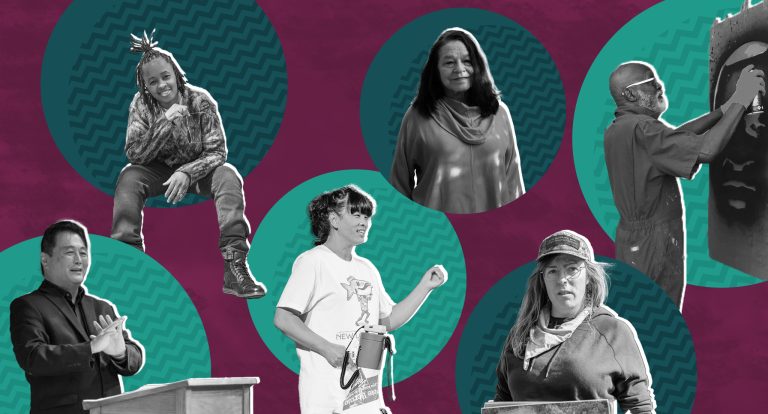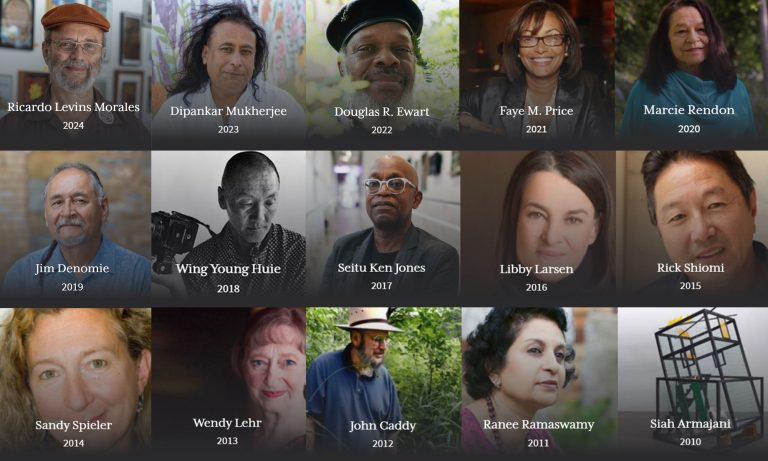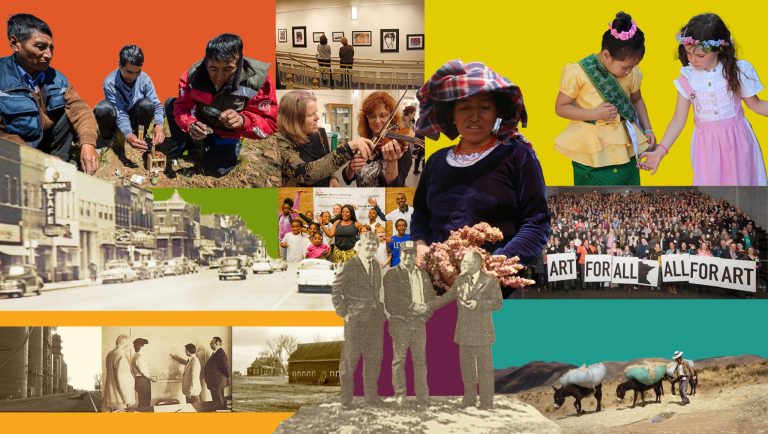People intrigued by Minnesota’s surplus of artist-centered creative placemaking activities often ask me, “What’s in the water in Minnesota?” And with good reason: A flurry of discussion (in articles, blog posts, opinion pieces, and at conferences) and bricks-and-mortar development (in the streets, neighborhoods, and lives of actual Minnesotans), all spinning out from the central concept of creative placemaking, has engulfed Minnesota’s arts and community development fields.
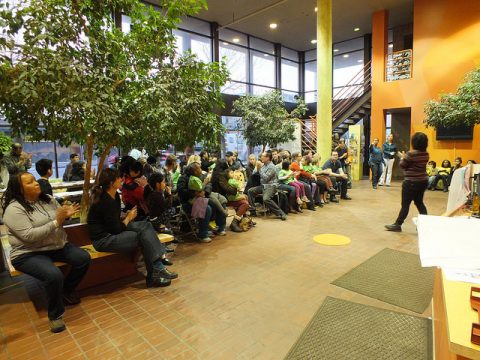
So, what is in the water around here?
The term creative placemaking has entered the lexicon of elected officials, commercial developers, business owners, chambers of commerce, and nonprofit leaders beyond arts and community development. The definition is crafted and re-crafted. The blueprint for successful implementation is drawn and redrawn. Ann Markusen’s and Anne Gadwa’s landmark 2010 study, Creative Placemaking, offered a definition that involves cross-sector partners strategically shaping places around arts and culture, “bring[ing] diverse people together to celebrate, inspire, and be inspired.”
Simply stated, creative placemaking builds strong, cross-sector partnerships grounded in arts and culture, by people and for people, to celebrate the lifeblood of a place. And while the cross-sector aspect is undeniably important, a crucial factor for success, in my opinion, is that arts organizations and artists are treated as leading or equal partners in the broad mix. It was important for the arts field to have researchers as experienced, thoughtful, and knowledgeable as Markusen and Gadwa — each with their own long histories working with artists — to tackle the phenomena of creative placemaking. After their report, in a headlong rush to parse the exciting and complex concept it presented, many tertiary discussions centered on the idea of “using the arts” to make a place more vibrant — though that concept makes no appearance in the report itself. (I admit I’m sensitive to the prospect of “using” artists, partly because our culture does not consider the arts as crucial as other professional endeavors; my sensitivity notwithstanding, “using” in this context ignores an essential point that this work is more successful when artists are engaged from the beginning, not plugged in after the fact.) That artists and arts and culture organizations are core to community planning and development is the idea that fuels creative placemaking. Otherwise, it’s just “placemaking.”

Not coincidentally, that very same impulse fuels ArtPlace America, whose grantee portfolio is a veritable rogues gallery of Minnesota’s creative placemaking leaders garnering national attention: Artspace, Bedlam Theatre, Blue Ox, Intermedia Arts, Juxtaposition Arts, Lanesboro Arts, Native American Community Development Institute, New London Arts Alliance, Pangea World Theatre, Pillsbury House + Theatre, Public Art Saint Paul, and Springboard for the Arts. Two important observations about these organizations: They didn’t become creative placemaking leaders over night (they have been at it for decades), and they put artists squarely and proudly at the center of their work.
I can’t speak for these organizations, but I can provide a glimpse into the origins of McKnight’s practice of supporting artist-centered creative placemaking, by looking briefly over the past three decades of our work. The 1980s. In 1980, recognizing that support for individual artists was essential for a rich and innovative arts community, our board instituted the McKnight Artist Fellowships Program. Every year since, dozens of artists across many disciplines each receive a fellowship of $25,000. (At the time there were two other MN foundations supporting artist fellowships: Bush and Jerome.) This funding stream made the artistic ground fertile. A key decision was to house fellowships administration within artist service organizations or community organizations — assisting to sustain these organizations as they developed. It was a decision tied directly to founder William McKnight’s belief that, across fields and sectors, the smartest people closest to the work are in the best position to nurture it. Today, Minnesota is home to more artist service organizations than any other state.
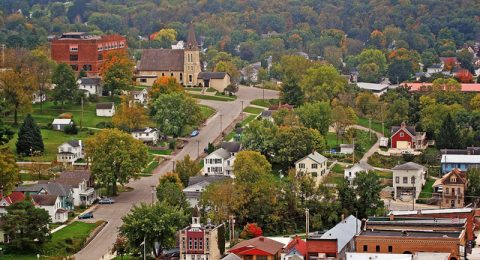
The 1990s. Then, during the 1990s, the identity of McKnight’s arts program came into stronger focus through the type of grants it was making. Many were in support of an individual artist’s vision for a dance company, or a gallery, or an artist retreat center. (In 1991 Neal Cuthbert joined the foundation as its first arts program director. He described the program as “arts funding with a community development lens.”) It was during this period that Artspace presented their nonprofit vision of not only developing artist housing but guaranteeing it would remain artist housing in perpetuity. McKnight was often the first to provide general operating support to innovative organizations like these. They have played no small role in making Minnesota’s arts ecology vibrant, livable, equitable, and economically diverse (descriptors that naturally come up in discussions of creative placemaking).
The 2000s. While supporting artistic vision through general operating support does not alone beget creative placemaking, it provides a sturdy base on which organizations can begin to build long-term sustainability and impact. Some examples of what McKnight support has helped to make possible:
- Intermedia Arts’ Creative Citymaking, an arts-based innovation initiative that pairs staff in City of Minneapolis departments with experienced community artists
- Springboard for the Arts’ Irrigate, a nationally recognized artist-led initiative pioneered along the newly developed light rail transit line in St. Paul
- Pillsbury House + Theatre’s embedding of authentic arts activities into all aspects of a community settlement house
- Lanesboro Arts leading the way to transform the entire town of Lanesboro into an arts campus, making it a national leader among rural creative placemakers
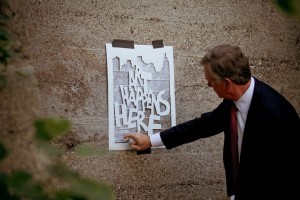
I became McKnight’s second arts program director in 2007, and ever since I’ve held myself responsible to build upon the Foundation’s artist-centric legacy. As expressed in our recently revised program goal — which states “Minnesota thrives when its artists thrive” — we believe artists are essential to a healthy and vibrant community. Our arts funding is not exclusively focused on creative placemaking, but we are focused on support structures for working artists to be successful in their endeavors. Creative placemaking is an essential load-bearing piece of that structure. Minnesota’s artists are innovators, organizers, and leaders, as critical to our state’s quality of life as professionals in other sectors. I believe history will show that 2011, when McKnight joined as one of the 14 funders participating in ArtPlace America, was yet another evolutionary turning point in our legacy of support for artists. (The Arts program partners with McKnight’s Region & Communities program on this investment.)
So, do I have an answer to the original question, “What’s in the water?” Not really. Our water does run deep in Minnesota — the Mississippi begins here — but I’m pretty sure there isn’t anything magical in it. The question really should be, “What have we learned?” In all of the flurry and buzz of creative placemaking, we have to pay attention to the long game and the big picture. It does not happen overnight and it does not happen without continued support. At McKnight, our answer to the question “What have we learned?” continues to be a variation on the same simple yet powerful theme our board identified and committed themselves to when they created the fellowships program in the ‘80s, and what Artplace America demonstrates in their forward-thinking work: that artists are vital to community life and development.
